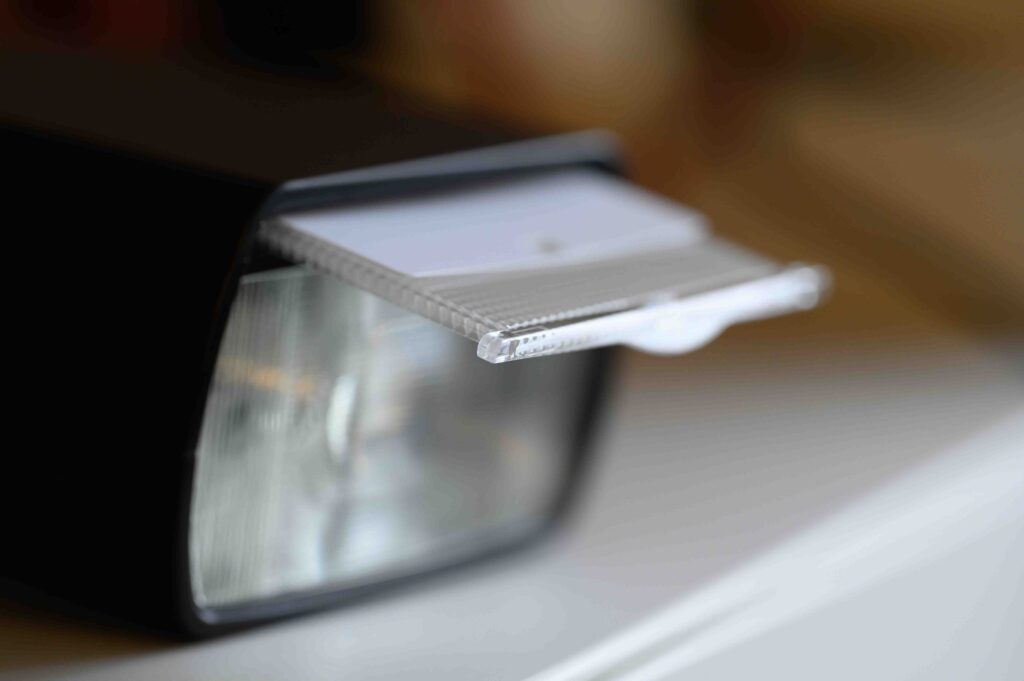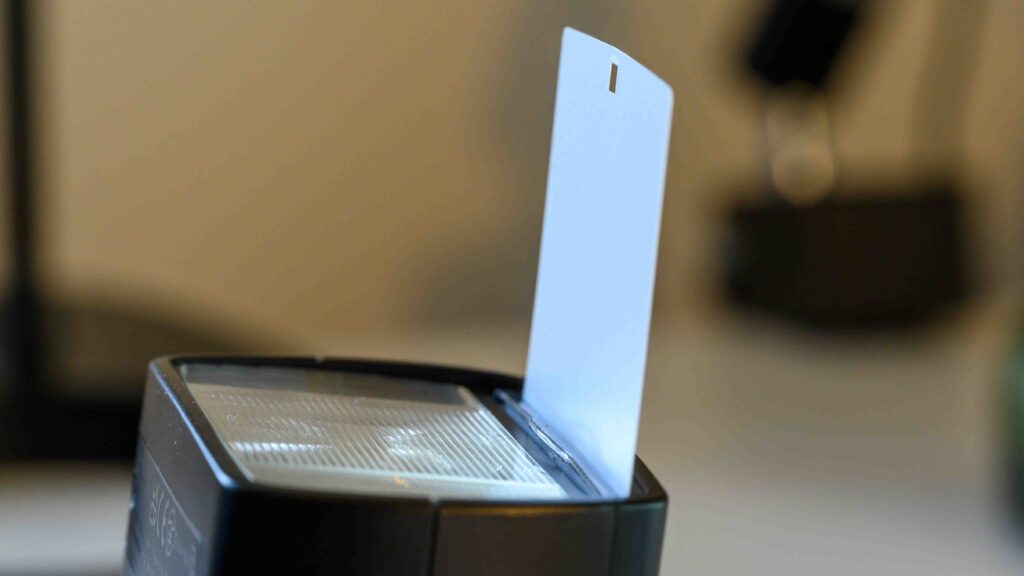Wide-angle diffuser
I must admit that it was only because I read the manual, that it dawned on me that there is a thing called a wide-angle diffuser built into my flash. I think it is quite common for flashes, as I have seen it on both Yongnuo and Godox flashes.
In hiding
The wide-angle diffuser sits a bit hidden on the front of the flash. It is just a piece of clear plastic that you can pull out from its hiding and mount it over the front of the flash. It is hinged, so it is quite easy to do and it swings into position almost by itself when you pull it all the way out. The plastic has some structure or pattern in it, which helps diffuse the light.
 The Wide-angle Diffuser sits hidden in the front of the flash. Here it is halfway out.
The Wide-angle Diffuser sits hidden in the front of the flash. Here it is halfway out.
In position
When you have put the wide-angle diffuser in position, you will hear the motor in the flash working (provided the flash is turned on). When you engage the diffuser, the lens moves to the widest position it can offer, typically 14mm or 18mm. And you can no longer change the zoom – it is locked.

The the diffuser and the wide position of the zoom in the flash in combination is intended to diffuse the light as much as possible and give a more soft light. In my experience the effect is noticeable but no match for a large diffuser like a softbox or simply bouncing the flash against the (preferably white) ceiling. But in a pickle, it can mitigate the harshness of the light a flash produces.
In the image above, you may have noticed the little white piece of thin plastic next to the diffuser (a reflector). They sit in the same slot in the flash, and when you pull out the diffuser, the reflector tags along. You can push the diffuser back in the slot and have the reflector out still, as shown in the image below.

If you set the flash so that it points upwards to bounce against the ceiling, the reflector can be used to create catch light in the eyes of people photographed.
Video link
Related reading
What is the guide number (GN) for a flash?
What is flash exposure compensation?
